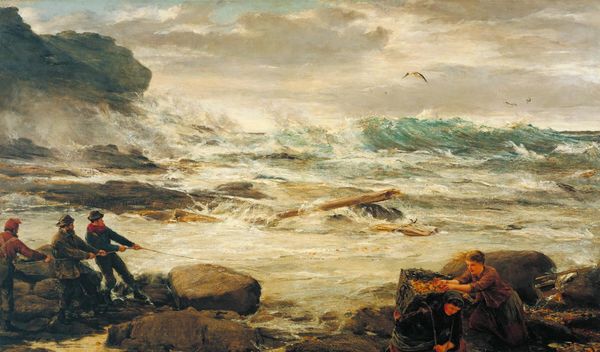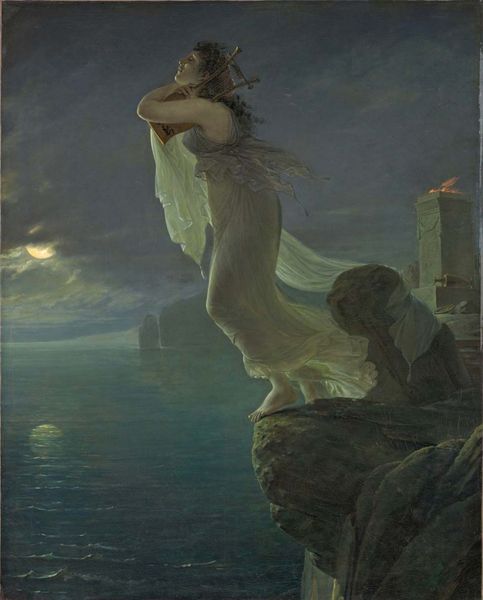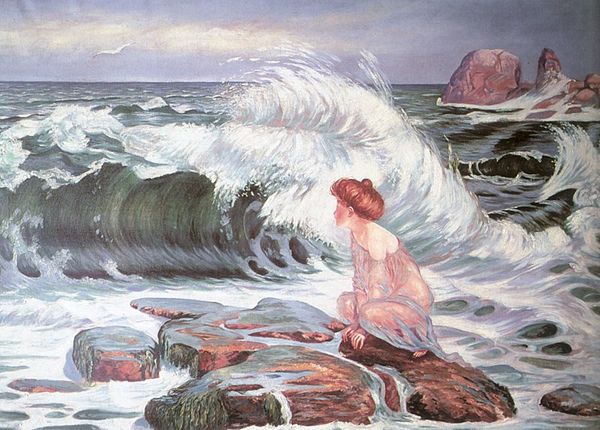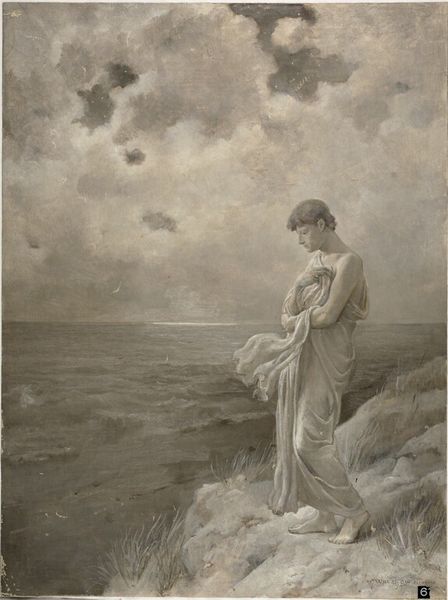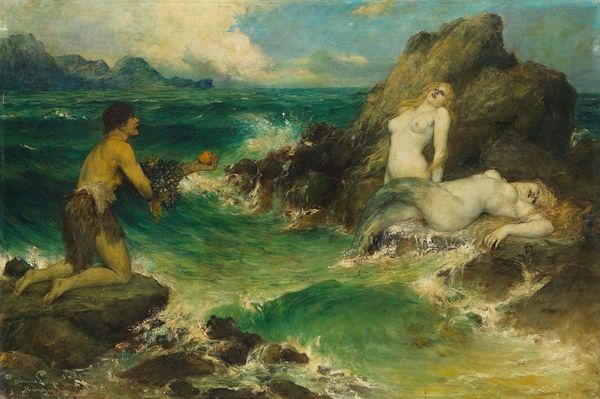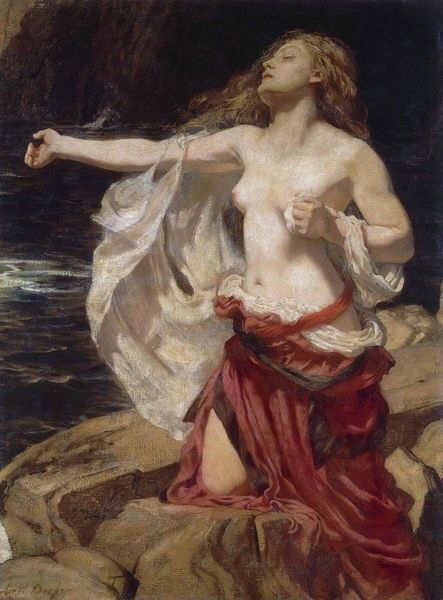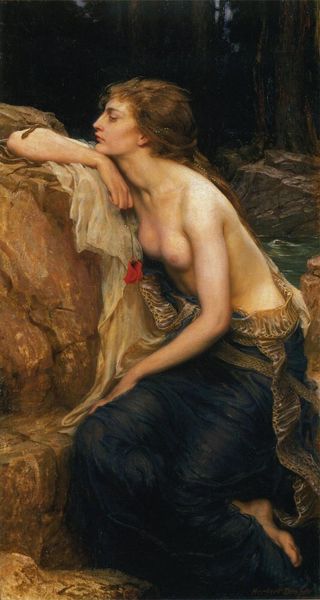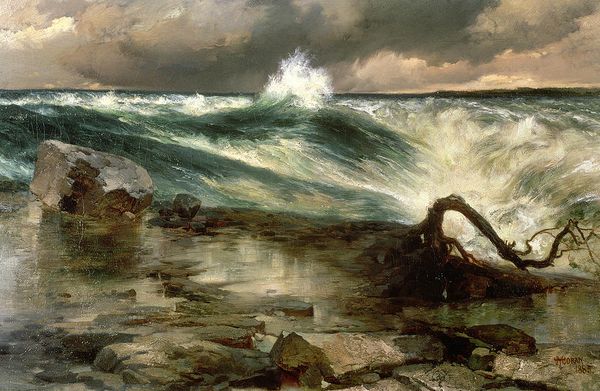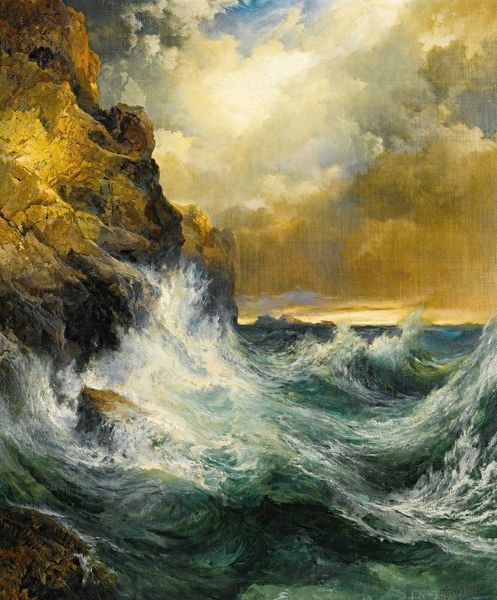
Copyright: Public Domain: Artvee
Editor: Here we have John William Waterhouse’s *Miranda–The Tempest*, an oil painting from 1916. The first thing I notice is the dramatic contrast: a delicate figure against the chaotic backdrop of a storm-tossed sea. What draws your eye, and how do you interpret this visual juxtaposition? Curator: Indeed. Waterhouse masterfully blends pre-Raphaelite aesthetics with potent symbolism. Look at Miranda's placement; she’s positioned between the wreck and the viewer, an intermediary between destruction and safety, chaos and order. It's a powerful emotional landscape. Have you noticed how her gaze contrasts with the wreckage behind her? Editor: Absolutely. She seems more wistful than horrified. Is that significant? Curator: Precisely. Miranda’s sorrow isn’t just for the ship. Her character embodies empathy and nascent understanding, echoing the themes of innocence and the loss thereof, common in Shakespeare’s work. Do you see any connection between the color of her dress and the surrounding nature? Editor: Now that you mention it, her blue dress harmonizes with the sea, almost blending into the scene. Is that intentional? Curator: The colors create a symbolic resonance, yes. Her blue garments suggest a link to the turbulent, yet life-giving waters; implying perhaps a deeper connection and control than initially perceived, resonating with Romantic themes. And what about the angle and placement of the anchor? Editor: The anchor laying discarded on the shore could imply hopelessness after a storm, I presume? Curator: Precisely. But think more metaphorically. It grounds the scene in both despair and latent potential. Consider, too, how later artists like Kara Walker would also harness iconic imagery. Editor: That is quite a striking parallel to observe, so that an object of support becomes associated to the contrary; thank you so much! Curator: Indeed. Art always provides an opportunity for discussion, inviting a reevaluation of both ourselves and cultural continuity.
Comments
No comments
Be the first to comment and join the conversation on the ultimate creative platform.




